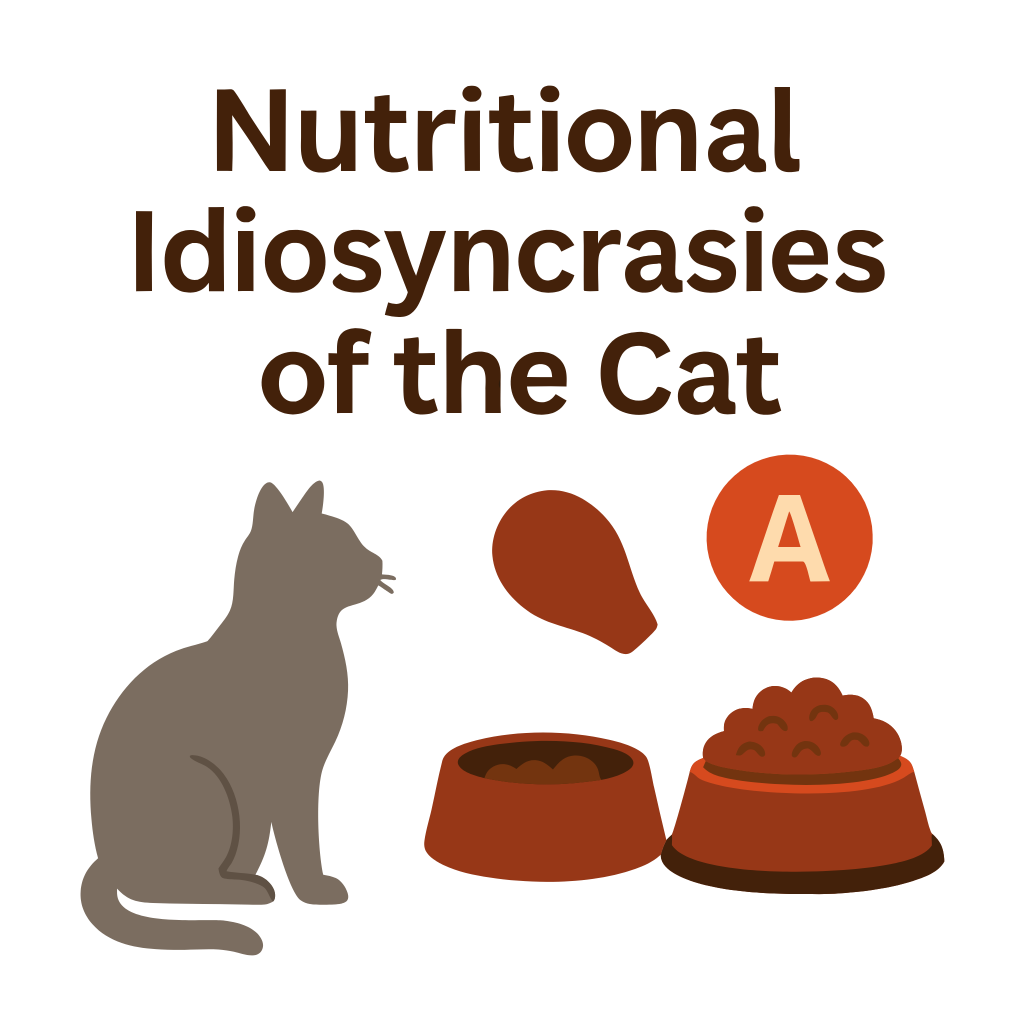
Nutritional Idiosyncrasies of the Cat
Share
Nutritional Idiosyncrasies of the Cat
Although dogs and cats share equal popularity as companion animals, they belong to two very different species with distinct dietary needs. Their differences extend beyond behavior and physiology, shaping how each species processes nutrients and thrives on certain diets. While dogs have evolved as omnivores, cats remain strict carnivores, a fact that plays a central role in their nutritional requirements.
The evolutionary history of these animals provides clues to their dietary differences. Dogs, part of the Canoidea superfamily, are related to species with varied eating habits. Bears and raccoons are omnivorous, while pandas have evolved into herbivores. Cats, on the other hand, belong to the Feloidea superfamily alongside genets, hyenas, and other felines, all of which are strict carnivores. This evolutionary background explains why dogs can adapt to a more flexible diet, while cats have retained the need for animal-based nutrition.

Because of this lineage, cats cannot meet all their nutrient needs from plants or plant products. They must consume animal tissues to obtain essential nutrients such as high levels of protein, taurine, arachidonic acid, and preformed vitamin A. Their unique metabolism also creates other requirements: cats cannot convert beta-carotene into vitamin A or the amino acid tryptophan into niacin. They are highly sensitive to deficiencies in amino acids like arginine and have a distinctive way of processing glucose and energy compared to dogs.
These specialized adaptations make feline nutrition far more demanding. Unlike dogs, which can live on carefully balanced omnivorous diets, cats require a steady intake of animal-derived nutrients. While vegetarian or vegan diets for cats can technically be formulated, they demand precise supplementation with purified taurine, arachidonic acid, and preformed vitamin A to avoid dangerous deficiencies. Without careful planning, such diets pose significant risks to feline health.
The practical outcome of these nutritional idiosyncrasies is clear: cats cannot be fed as though they were small dogs. Their high protein requirement, combined with their need for animal-based nutrients, makes it essential to respect their carnivorous nature. Proper feeding practices for pet cats must account for these differences to ensure optimal health and longevity.
The domestic cat’s nutritional demands may seem restrictive, but they are a direct reflection of its evolutionary history. Recognizing and respecting these requirements is key to providing the best care for our feline companions.
